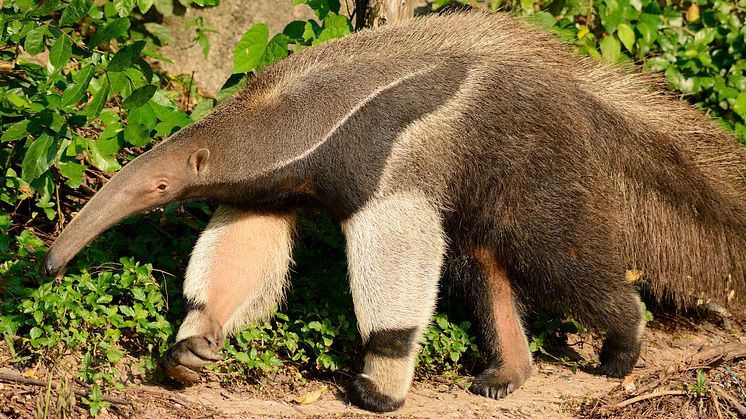
Press release -
World Animal Day, 4 Oct 2021 - Making way for the Giant Anteater
The Faber-Castell forests in Brazil are teeming with diverse fauna. The animals that live here have been protected over the last few decades. Thanks to some very careful planning, the diversity of species has even shown a clear increase over the years.
Every evening the birds sit in a tree that stands in an open area, a few hundred meters away from where the forest begins. This single trees on the land are no accident, as forestry engineer Kelen Pedroso explains. They help the birds fly over and provide them with a welcome resting place. Pedroso works in the Faber-Castell forest in the southwest of Brazil, in the state of Minas Gerais. The area covers 10,000 hectares of sustainable forest set aside for the manufacturing of over two billion pencils per year. “When we fell trees, we always leave a few of them on purpose for the birds," Pedroso says.
Sustainably forestry for more than 40 years
About 40 years ago, Faber-Castell decided to establish its own forests here in Brazil. This region is a savannah with little or no rainfall for six months of the year, and the soil is dry. The Pinus caribaea hondurensis, a Caribbean pine, thrives here despite the conditions. It can survive droughts and grows quite fast since it only takes twenty years for the pine to reach maturity. Not all of the area here is pine. About a quarter is native vegetation and is not used for timber production. "We farm according to FSC® certification," Pedroso explains. The Forest Stewardship Council (FSC®) issues its certificates only to those who manage forests in a sustainable and socially responsible manner – and that means, for example, protecting plants and animals.
Thorough documentation of the increase of plant and animal species
Experts have been recording and analysing the degree of biodiversity on Faber-Castell's properties since the early 1990s. The animals are counted using hidden cameras or small amphibian traps. As a result, it’s been possible to collect meaningful statistics that span a 30-year period. The number of different mammal species has almost tripled in that time, from 30 to about 80 species. The number of bird species has doubled to about 270. When trees are harvested, Faber-Castell employees always clear away from the road towards still-standing forests, so that any animals that might have been in that spot can retreat in peace. Given the long growth cycle of the trees, many of the pine forests are largely untouched for years. Wood is a raw material that needs time, patience, and rest.
Encounter with species threatened of extinction
The habitats of native animals are untouched, native forest areas. The motion camera has repeatedly taken photos of cougars, and occasionally of impressive Giant Anteaters. A while ago, some of the employees also came across a 13-meter-long strangler snake. Zoologist had rarely seen such a specimen in many decades – just one of the indications that wildlife in the area is intact. Another bio-indicator for species-rich habitats is the more than 200 different ants, which have been documented in the Faber-Castell forests.
In this diverse Faber-Castell ecosystem, the various plants and tree species are also counted and protected, and the water quality of the area is checked regularly. Small streams are of vital importance that remain untouched on the Faber-Castell site. Experts from Faber-Castell visit schools in the area or talk to the owners of neighbouring properties. "For decades, we have been involved in education and training here in addition to our own work. We educate the community about sustainable use and about environmental issues," Pedroso says.
These longlasting sustainability efforts are more and more appreciated by Faber-Castell’s stakeholders. Recently, Faber-Castell has been listed among the German companies that "offer society particularly high added value" and have mastered the "triad of ecological, social and economic responsibility." These are the findings of the study "Germany's Most Valuable Companies" by the Institute for Management and Economic Research (IMWF).
Categories
Faber-Castell is one of the world’s leading companies for high-quality products for writing, drawing and creative design as well as decorative cosmetic products. With more than two billion pencils and colour pencils per year and around 6,500 employees, Faber-Castell is the world’s leading manufacturer of wood-cased pencils. Nowadays the company is represented in over 120 countries and has its own production sites in 10 countries as well as sales companies in 23 countries. Founded in 1761, Faber-Castell is one of the oldest industrial companies in the world and has been owned by the same family for nine generations. The company owes its leading position on the international market to its traditional commitment to the very highest quality and the large number of product innovations.

